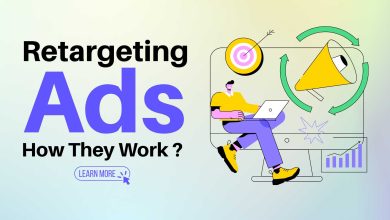Gamification in Marketing: Leveraging Play to Engage and Delight Consumers
Introduction
In recent years, gamification has emerged as a powerful tool in marketing, transforming the way businesses engage with their audiences. By integrating elements of games into marketing strategies, companies have found a way to capture consumers’ attention, increase brand loyalty, and drive desired behaviors. This essay explores the concept of gamification in marketing, its benefits, and the various ways in which businesses are employing this innovative approach to connect with their target audience. Additionally, we will analyze real-world examples to understand the impact of gamification on consumer behavior and the challenges that marketers may encounter in implementing successful gamification campaigns.
Understanding Gamification in Marketing
Gamification is the application of game-like elements and mechanics in non-gaming contexts to motivate and engage users. In marketing, it involves incorporating elements such as points, badges, leaderboards, challenges, and rewards into campaigns and experiences. The goal is to create an enjoyable and immersive environment that encourages consumers to interact with a brand actively. Gamification capitalizes on fundamental human motivations, including competition, achievement, and socialization, to foster deeper connections between brands and their customers.
Benefits of Gamification in Marketing
1. Enhanced Consumer Engagement: Gamification captivates consumers by making the brand experience more interactive and enjoyable. Engaged customers are more likely to spend more time with the brand, leading to increased brand awareness and loyalty.
2. Increased Customer Loyalty: By rewarding users for their engagement and loyalty, gamification programs create a sense of achievement and belonging, fostering long-term relationships between the brand and its customers.
3. Behavior Shaping: Gamification provides businesses with the opportunity to influence consumer behavior. Through well-designed challenges and rewards, marketers can encourage desired actions, such as repeat purchases or sharing content on social media.
4. Data Collection and Insights: Gamification enables businesses to gather valuable data about consumer preferences and behaviors. By tracking user interactions within the game-like environment, marketers can gain insights that inform their future strategies and product development.
Gamification Strategies in Marketing
1. Loyalty Programs: Loyalty programs often incorporate gamified elements like points, levels, and rewards to incentivize customers to make repeat purchases and engage with the brand regularly.
Example: Starbucks Rewards is a popular gamified loyalty program that offers stars for each purchase, which can be redeemed for free drinks and food items.
2. Contests and Challenges: Brands run contests and challenges that require users to complete certain tasks or submit creative content for a chance to win prizes.
Example: Coca-Cola’s “Share a Coke” campaign invited customers to find and share bottles with their names on social media, encouraging user-generated content and creating a sense of camaraderie among consumers.
3. Interactive Apps and Games: Brands develop interactive apps and games that showcase their products or services while providing an entertaining experience for users.
Example: Nike’s “Nike+ Run Club” app tracks users’ runs, offers challenges, and provides rewards, fostering a community of runners and promoting Nike’s fitness products.
4. Personalization and Customization: Gamification can be used to personalize user experiences by allowing customers to design their products or tailor their service preferences.
Example: Build-A-Bear Workshop lets children create their stuffed animals, providing an immersive and engaging experience.
Real-World Impact of Gamification in Marketing
1. Foursquare: Foursquare, a location-based app, successfully integrated gamification by awarding users points and badges for checking into various locations. This encouraged users to explore new places and share their experiences, promoting businesses while enhancing Foursquare’s user base.
2. McDonald’s Monopoly: The Monopoly promotion run by McDonald’s is a classic example of gamification. Customers collect game pieces to win prizes, creating excitement and increasing footfall to the restaurants.
3. Duolingo: Duolingo, a language-learning app, uses gamification to engage users in language courses. Points, achievements, and a sense of progress motivate learners to continue their studies.
Challenges and Limitations
While gamification can be a powerful marketing tool, it is not without its challenges:
1. Over-saturation: As gamification gains popularity, consumers may become desensitized to its effects if not executed thoughtfully, leading to reduced impact.
2. Poor Design: Ineffective gamification strategies may be perceived as gimmicky or insincere, leading to negative reactions from consumers.
3. High Costs: Developing and maintaining gamified experiences can be costly, particularly for smaller businesses with limited resources.
Conclusion
Gamification in marketing has proven to be a game-changer, revolutionizing the way brands interact with consumers. By tapping into people’s innate desire for fun, achievement, and competition, businesses can create meaningful connections, drive customer engagement, and shape desired behaviors. However, successful gamification campaigns require careful planning, creative execution, and a deep understanding of the target audience. As technology continues to evolve, the potential for gamification in marketing will only expand, offering new opportunities for businesses to create unforgettable experiences and build lasting relationships with their customers.



